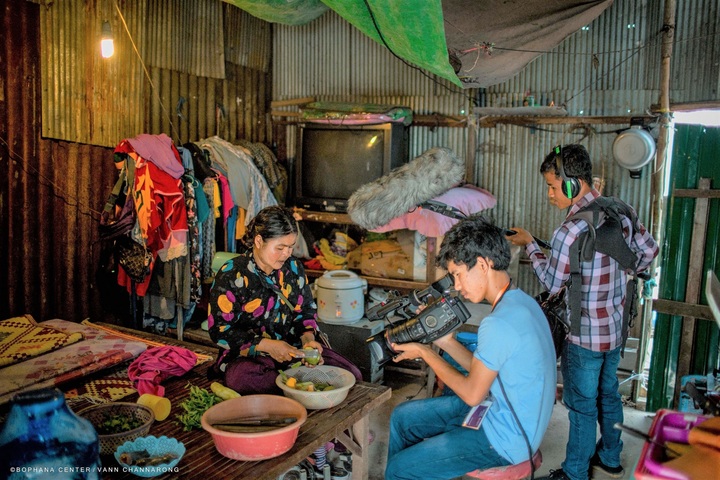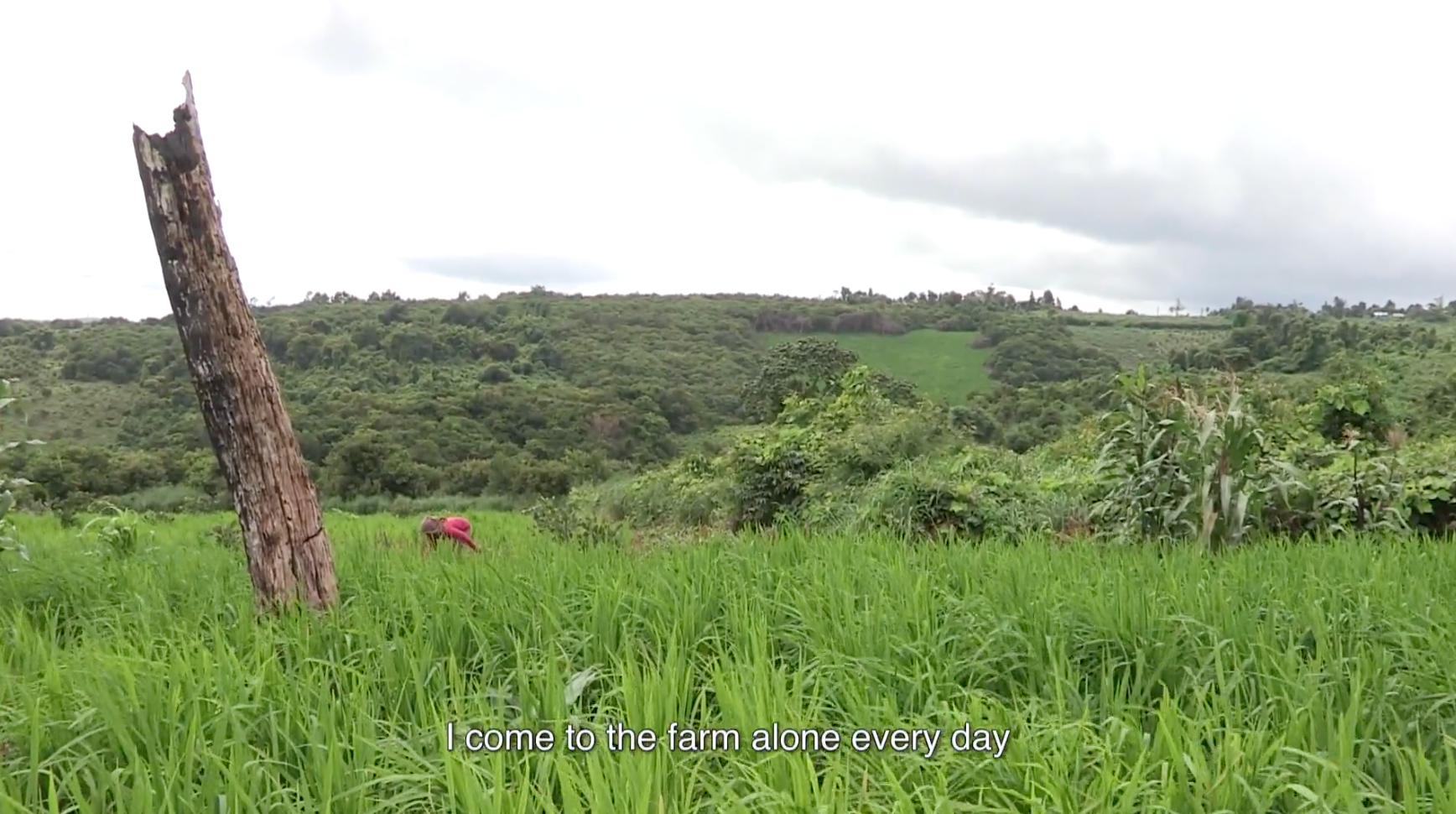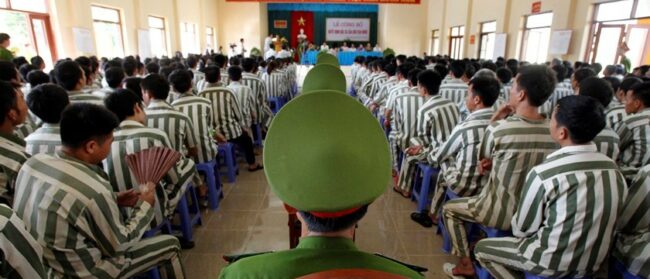Growing up in northeastern Cambodia’s Ratanakiri province, Mourng Vet had never held a camera when he decided to tell stories about his indigenous Kreung culture through film.
Vet had experienced firsthand the struggle to maintain his Kreung traditions. His family, like their neighbours, had long switched to chainsaws from axes to clear forests, plastic bottles to hold their water instead of gourds, and farmed cashews for profit alongside subsistence rice.
Vet knew things were being lost — he could remember the names of some instruments, but not their sounds — and like many of his generation, the 24-year-old relied on Khmer words to supplement his Kreung vocabulary. Even so, he wanted to learn, celebrate and document what still existed.
“If I wanted to know more about my own identity I don’t know where I would find it, there is nothing on the internet,” Vet told the Globe. “I think filmmaking is important for me and my [Kreung] traditions, in order to show how our people live to the whole world.”
Vet is among a group of 12 young indigenous filmmakers who have spent the past two years learning the craft at the Bophana Centre, an organisation which has trained hundreds of Cambodians for careers in documentary filmmaking since its inception in 2006. In a country 90% ethnic Khmer, this is the first time the centre has prioritised indigenous youth, with the aim of helping Vet and his cohort highlight the unique issues, stories and perspectives of their cultures.
“It’s not only about building their skills in filmmaking, but about documenting the daily life of Cambodian people and the livelihoods of indigenous people,” Chea Sopheap, director of Bophana, told the Globe.
“That’s why we encourage young people to make films in their own community.”

Bophana’s two-year “Amplifying Voices” project started in 2019 with funding from the Ford Foundation and Sundance Institute to serve youth in the northeastern provinces of Mondulkiri, Ratanakiri and Banteay Meanchey, home to many of Cambodia’s 24 indigenous groups.
Producing three short documentaries each, the work of the Bophana filmmakers has been accepted into prestigious international venues such as the Human Rights Festival in Geneva and the Biennale of Sydney. The centre also announced in August it will expand its reach based on the success of the filmmakers, training another 30 youth at a satellite centre in Ratanakiri with sponsorship by the Wikimedia Foundation.
Despite the filmmakers’ lack of experience, Vet says he and his cohort entered the productions prepared for the challenges ahead.
“I could hold the camera, I could hold the boom,” he said. “I was excited, because I knew I’m going to help my community with documentaries.”
His confidence came from the time-tested training, delivered by former proteges of the centre’s co-founder, the renowned filmmaker Rithy Panh. Three months of cinematography, three months of audio recording and additional lessons on directing – an education based on understanding how a sequence of shots creates feelings.
One part of filmmaking not covered in the training, though, was how to deal with the mosquitoes rampant in their home provinces.
“During the filming, the mosquitoes bit my face and my hands,” Vet said. “But we could not slap them because it would destroy the image and the sound. So we just let the mosquito bite us.”
It’s important for the protagonist to speak and tell their story in a natural way, in their mother tongue
Even more painstaking than holding a steady shot while being drained of blood was finding subjects willing to submit to the documentary process. Most Bophana filmmakers began by speaking with village chiefs to understand the most important issues in their communities and identifying families representing the problems, including early marriage or sexual or domestic violence against women.
Vet’s film, Ulcer in the Mind, follows Ching, an older Kreung woman living with the trauma of an abusive husband and the consequences of her daughter’s rape.
“Whenever I come to this stream, I remember the rape of my 3-year-old daughter,” said Ching in one scene as she walked through the forest. “Behind the bamboo.”
The powerful intimacy of the moment was the product of weeks of trust-building with the camera off. Like the other Bophana filmmakers, Vet spent time shadowing Ching and her family, sharing meals and getting to know her, all before he started recording.
For Vet, the goal of these kinds of films is not simply to recount trauma for its own sake, but to promote community dialogue and awareness about problems like sexual assault and its repercussions. In non-pandemic times, this was done through community screening events, bringing together villagers, regional officials and non-governmental organisations to take part in public discussions.
“Like the other students, Vet has become a social activist,” Chea said. “One who helps make the voices of his indigenous community heard, especially voices of women and girls.”
The voices shared in Ulcer in the Mind speak almost entirely in the Kreung language, a conscious decision by Vet to ensure the film’s subjects could fully express themselves, and leaving further records of the language — an intangible part of culture itself.
“It’s important for the protagonist to speak and tell their story in a natural way, in their mother tongue,” Chea said. “Khmer is their second language.”
There are at least 19 indigenous languages besides Khmer spoken across the Kingdom. However, they had not been a formal part of the education system until a 2015 UNICEF-funded initiative incorporated them into elementary schools with high levels of indigenous youth.
The implementation happened too late for Vet, who never learned to write Kreung in school and has been left with a limited vocabulary. Some older relatives like Vet’s grand-uncle still speak full Kreung, but that doesn’t mean they’ll answer Vet’s questions about Kreung history.
“Some things I think he knows, but he says ‘no’ and walks away [when I ask],” Vet said. “Maybe he doesn’t want to think about his past.”
From French colonial rubber plantations that encroached upon indigenous lands, post-independence Prince Sihanouk-era relocation efforts in the 1950s and 60s that removed communities from their native highlands to lowlands, and the forced “Khmerisation” campaigns of the Khmer Rouge in the 70s to convert indigenous cultures to Khmer, outside forces have long-eroded indigenous ways of life throughout Cambodia. In recent years, corporations and loggers have also exploited ancestral lands, whether by legal or illegal means, eroding their ability to sustain cultural practices tied to natural surroundings.
With dwindling opportunities for passing down traditions, Bophana filmmakers such as Vet believe their work will serve as its own form of archive and knowledge sharing for the future.
“It will be easier for the young generation to do more research,” Vet said. “When they want to know about their own identity they can watch our videos.”

But for now, Vet’s approach to documenting his community’s culture has had to evolve in response to the pandemic. Unable to safely meet film in rural communities in his province, Vet has adapted by learning 2D animation through Youtube at his home near Ratanakiri’s capital Banlung, developing an animated short film on Kreung life.
“Some pictures we cannot retake, so we have to make it in animated version,” Vet said. “It can help the young generation to know more about the things that belong to them.”
He’s slowly drawing the memories of all he can recall of his childhood and the sights around him today, from the leaves and bamboo sewn together to build a traditional Kreung house, to the quiet footsteps of his grand-uncle on the hunt in Ratanakiri’s forests, or the whimsical folk tales his mother told him before bed.
Vet wants to ask his mother to narrate his favourite story about a man who tries to trick monkeys into bringing him to golden mountain, which he hopes to include as voiceover in the animation. Yet she’s still not convinced filmmaking is a suitable path, and keeps pressuring him to find another means to earn a living.
“I’m not going to blame her,” Vet said. “It’s the attitude in my community, most of the old people want to see their son or daughter have a husband or wife and get a baby – that’s their happiness.”
Holding on to filmmaking, Vet remains eligible to receive ongoing financial support from the centre even though his scholarship has ended, through grants provided by the Australian Embassy and other funders.
While Vet went from not knowing how to use a camera to getting his work accepted into international film festivals, three films is not enough to become an expert filmmaker, Bophana’s director emphasises. Though documentary filmmaking is far from a lucrative career in Cambodia, Chea hopes the students will continue to seek out to produce films, recognising the cultural value to their work.
“We know it’s not making them rich,” Bophana’s director said. “But many of our students continue to make films because they love it, because they want to raise awareness of social issues through the lens of a camera.”
“Those people deserve a lot of respect.”


